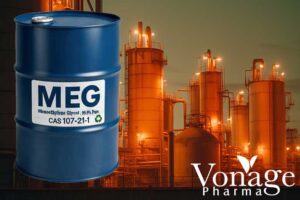Myanmar, located in Southeast Asia’s opium-producing Golden Triangle, has one of the highest rates of opioid dependence in the region. In response, the country has moved toward evidence-based harm reduction and treatment strategies, prominently featuring methadone maintenance therapy (MMT). (asean.org)
The Methadone Myanmar Program: Progress in Numbers
The methadone program in Myanmar is one of the most visible interventions targeting opioid dependence and its associated health and social impacts. Launched in 2006, this government-led initiative has grown rapidly and forms a cornerstone of the country’s harm-reduction strategy. (Pubmed)
-
As of 2022, more than 26,000 patients were enrolled in methadone treatment programs in Myanmar, a substantial increase from just 260 patients at the program’s inception. (asean.org)
-
Methadone is dispensed across more than 50 centralized clinics in both urban and rural areas, with average daily patient doses typically in the range of 60–90 mg. (sciencedirect)
- Studies in major Myanmar cities found that most methadone clients had remained in treatment for more than two years, and a six-month treatment retention rate of over 65% was reported. (inhsu.org)
Treatment has proven highly effective in reducing heroin use, lowering HIV transmission rates through decreased injecting risk, and enhancing social functioning for people who inject drugs (PWID). However, geographic disparities remain, with coverage in some regions as low as 2–5%, even as others, such as Bamaw, achieved coverage rates above 50%. (Pubmed)
Current Challenges: Supply, Access, and Quality
Despite notable successes, several obstacles present market and public health opportunities:
-
Supply chain disruptions due to political instability and the COVID-19 pandemic have occasionally led to local shortages and interruptions in continuity of care. (who)
-
Coverage gaps and low retention rates in some provinces highlight the need for expanded services, diversified dosage forms, and new patient-centric delivery models—including take-home dosing protocols, which increased treatment accessibility during the pandemic. (inhsu.org)
-
The evolving synthetic drug landscape, with the rise of methamphetamine (ATS) use, increases the urgency to prevent further opioid-related harms. (unodc.org)
The Expanding Methadone Market in Myanmar
Market monitoring reports confirm that the opioid treatment market, including methadone, is growing in Myanmar and the broader ASEAN region. In 2022, around 26,196 patients were officially documented as receiving methadone maintenance—an 8–10% increase from the previous year despite pandemic-related setbacks. By comparison, in the broader ASEAN area, new ATS users make up over half of all people receiving drug treatment—but Myanmar remains unique in having a robust and expanding methadone program as an official pillar of national drug policy. (asean.org)
Due to increased recognition, Myanmar’s health authorities aim to further scale up MMT programs to reach as many as 40% of all people who inject drugs (PWIDs) by 2025—a target that would likely require tens of thousands of additional methadone doses and improved pharmaceutical sourcing and distribution. (sciencedirect)
Opportunities for Pharma Manufacturers
With a growing patient base, Myanmar’s methadone market presents both immediate and long-term opportunities for pharmaceutical manufacturers:
-
Regulatory reforms: Myanmar’s evolving drug policies are geared toward expanding OST (opioid substitution therapy) and supporting reliable, compliant procurement from global manufacturers. (unodc)
-
New market entrants: Pharma companies can contribute innovative dosage forms, quality control measures, and capacity-building efforts to address access gaps.
-
Investment incentives: Market growth and public health funding encourage international collaborations and the establishment of local production or supply chains.
Global forecasts expect the methadone market in Southeast Asia to grow at a healthy CAGR, aligning with broader trends in addiction and harm reduction medicine.
Vonage Pharma: Product Solutions for Providers
To address the specific needs of Myanmar’s methadone program, Vonage Pharma offers a broad portfolio tailored for providers:
-
Methadone HCl: High-purity active ingredient
-
Methadone Hydrochloride 5 mg: For dose titration or initial therapy
-
Methadone Hydrochloride 20 mg: Maintenance dosing for established patients
-
Methadone Hydrochloride 40 mg: Advanced maintenance where indicated
-
Methadone Oral Solution 25 mg/5 ml: Flexible liquid form for individualized dispensing
Each formulation is manufactured according to stringent quality standards, ensuring therapeutic consistency, safety, and patient accessibility—key factors that support Myanmar’s ongoing expansion of methadone maintenance therapy.
Regulatory and Public Sector Incentives for Manufacturers
There are significant opportunities for pharmaceutical manufacturers who can support Myanmar’s growing need for methadone and other OST products:
-
Collaboration with national health authorities to supply methadone in multiple formulations (tablets, oral solution) and varying strengths, tailored to both urban and rural delivery environments. (asean.org)
-
Investment in secure, traceable distribution pathways that meet WHO and Myanmar Ministry of Health standards, as robust quality assurance remains critical for public trust and international benchmarking.
-
Participation in outreach and provider training to facilitate transition to flexible, take-home-dosing regimens—a model with demonstrated patient retention benefits in crisis periods such as the COVID-19 pandemic. (inhsu.org)
The Role of Product Diversification
While most methadone in Myanmar is administered in oral solution form through clinics and hospitals, global standards increasingly encourage diversified dosage forms for more flexible and individualized treatment. Pharma manufacturers best prepared to serve the Myanmar market will offer:
-
Methadone Hydrochloride bulk API for hospital compounding and national formulary use
-
Methadone Hydrochloride 5 mg, 20 mg, and 40 mg tablets for outpatient, community, or pharmacy-based dosing programs
-
Methadone Oral Solution 25 mg/5 ml for clinic and take-home overdispensing protocols. (sciencedirect)
Such diversification not only mitigates supply risk but can also improve patient adherence, regulatory compliance, and public health outcomes in a country where logistical challenges still affect many health interventions. (asean.org)
Conclusion
The “methadone myanmar” context represents a high-impact growth area for pharmaceutical manufacturers. With a steadily increasing patient base, government commitment to harm reduction, and gaps in both drug formulations and distribution, pharma players that emphasize quality, product variety, and partnership will contribute meaningfully to Myanmar’s fight against opioid dependence while expanding their own market reach.
By meeting Myanmar’s rising need with innovative supply solutions and diversified products, manufacturers can support not only business objectives but also the nation’s resilient journey toward improved opioid treatment and public wellness.







